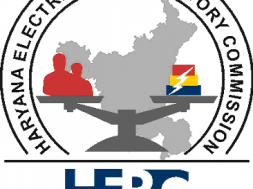
We’ve decided time not ripe to enter manufacturing, says COO of JSW Energy
The reduction of annual solar capacity target by China to 30 GW from 55 GW, against the manufacturing target of 115 GW, has created surplus of almost 80 GW in China which they started dumping in countries like India.
The next one-two years are going to be crucial for the solar energy sector as it may witness similar financial stress as is being witnessed by the thermal power sector. Aggressive capacity additions at very lower tariffs are unviable for the sustainability of projects and good only for 8-10% return on investments, said Sharad Mahendra, chief operating officer of JSW Energy, in conversation with FE’s Vikas Srivastava. Excerpts:
You have postponed your capital expenditure for solar power projects as well as manufacturing of panels in the light of policy clarity on tariffs and duties. How soon do you expect things to improve?
The reduction of annual solar capacity target by China to 30 GW from 55 GW, against the manufacturing target of 115 GW, has created surplus of almost 80 GW in China which they started dumping in countries like India. We are not sure if the safeguard duties imposed by the Indian government will continue after two years. Also, we are not sure of the existence of import duties. Keeping that in mind, we have decided it may not be right time to enter manufacturing. Besides, we do not base our long-term policies on subsidies. In solar generation, we postponed our capacity addition target of 1000 MW, since tariffs are still way below the `3/kWh levels. At current tariffs of `2.44–`2.78/kWh, the return on investments are not expected to be more than 8-10%against our expectations of 15.5%.
We believe if aggressive capacity additions continue at current levels, there will be huge stress in the sector over the next one-and-a-half to two years, similar to one witnessed in the thermal sector. We have very clearly benchmarked our numbers and there is nothing short term. In short term, there can be visibility for projects. However, renewable developers who entered with 8-9% RoI are all struggling and looking to exit.
What according to you is an ideal tariff for plants to generate return of 15.5%? What do you think will happen to projects with higher tariffs of Rs 5-Rs 6/kWh?
A lot depends on module prices. Today, if we consider 25 cents as module price, with safeguard duties included, a good range would be between `3-3.20/kWh depending on the size of projects. Projects of 50-100 MW size, capacity utilisation factor (CUF) or PLF of 24-25%, and higher radiation levels are some of the other factors that would cover the expected tariff range. As far as projects with tariffs of above Rs 5/kWh are concerned, it needs to be seen who are the buyers? If there are buyers who are buying at Rs 10/kWh receive power at Rs 6/kWh, it will be a gain of Rs 4 for them. So it is not necessary that all projects with high tariffs would become stressed projects. However, the issue for projects with higher tariffs despite having a PPA is with merit dispatch order. When demand for power comes, discoms always prefer players with lower tariffs leading to idling of plants.
Fuel cost is a huge burden in current high price environment. Are you looking at newer geographies or acquiring mines?
We are already acting very efficiently in terms of coal buying. Our major percentage of coal comes from South Africa and Mozambique. However, in the last few months, we have worked our strategy to focus on Indonesia, since Indonesian coal prices have not increased in line with global prices. Unlike in past, a major portion (70-75%) is now coming from Indonesia. We looked at Russia as well, but in current rising demand scenario, it is important to have an efficient inventory levels. We noticed that from Russia it is a huge challenge to maintain 365-day operation. When winter sets in, it is a huge challenge to maintain the operation. So, we are dynamic in securing coal from whichever window that opens up. The 4200 kcal Indonesian coal comes at $30/tonne free on board (FOB) as compared to South African API coal (6000 kcal) that is priced at $92.5/tonne, while the New Castle coal is priced at $102/tonne (FOB).
By when can we expect JSW Energy’s EBITDA and operating margins to improve?
Our long-term power purchase agreements (PPAs) have reached 80.4%. We believe that it is a fairly good level for EBITDA to stabilise. Since there are fixed returns as per norms and the fuel cost is a pass through, it now depends on how efficiently we work on the interest cost to increase our profitability. Going ahead, as the group captive demand increases with increase in steel capacity, we see the EBITDA improve by a few percentage points in the next couple of years. We plan to convert our 860 MW Vijaynagar plant to 100% group captive plant in the next 2-3 years from 316 MW at present. It will also improve our PPA visibility.















